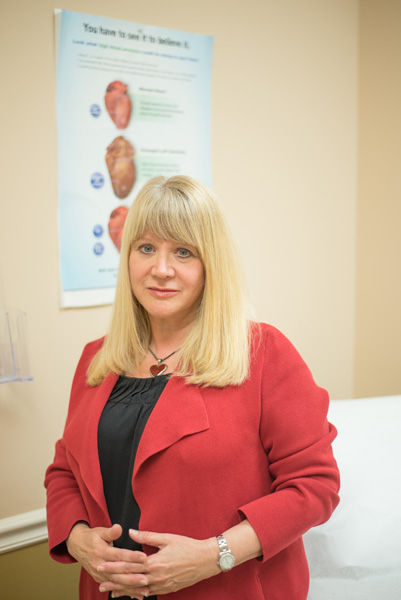Every 34 seconds, says the Heart Foundation, someone in this country has a heart attack, and heart disease claims more lives in the U.S. than all forms of cancer combined.
The Centers for Disease Control adds another scary statistic: Every 60 seconds, it says, an American woman dies from heart disease and almost two thirds of those women will have either shown no sign of heart disease or the signs they did show weren’t properly diagnosed.
The CDC points out, “Women’s heart attack symptoms are different and less often recognized. (They may include) shortness of breath, nausea, anxiety, back or jaw pain. While these can be common occurrences for a woman, they may also be a sign she’s having a heart attack. The subtlety of symptoms means women may be less likely to call 911, delaying treatment and threatening their lives.”
Moreover, according to a Jan. 25 report by the American Heart Association, the group’s the first-ever scientific statement on heart attacks in women, “A woman’s heart attack may have different underlying causes, symptoms and outcomes compared to men.”
In the Sunshine State and across the nation, those outcomes often aren’t good.
According to the Heart Association, about 65 women die every day from heart disease here in Florida. Over the course of a year that adds up to almost one third of all female deaths in the entire state.
“Women do not get as much ‘intervention’ as men,” says Dr. Janet Anderson, who is board certified in both internal medicine and cardiology. “They don’t get as many bypasses as men. They’re not recognized as quickly as men.”
Anderson, who is affiliated with Sebastian River Medical Center, continues: “Part of it has to do with females needing to understand that there is something different (going on) in their bodies and they need to present to a doctor.”
“You can only diagnose if the patient is coming to you. I’m a cardiologist. If I don’t get the referral or the patient doesn’t call directly then I’m not going to know that someone has a problem.”
In a massive 32-page article entitled, “Acute Myocardial Infarction In Women,” set to be published in the Feb. 23 issue of AHA’s “Circulation” magazine, an 11-member team of authors, including the University of South Florida’s Dr. Theresa Beckie, write that coronary artery disease in women “remains under-studied, under-diagnosed and under-treated” and that “since 1984, the annual cardiovascular mortality rate has remained greater for women than for men.”
Indeed, says the CDC, one in three women who die in the U.S. this year will die of heart disease. That compares to one in 31 who die from breast cancer each year.
Despite that, only about one in five American women believe heart disease is the primary threat to their health and to their lives.
The Texas Heart Institute joins the growing chorus calling for better awareness of women’s heart health, noting that “heart attacks are generally more severe in women than in men. In the first year after a heart attack, women are more than 50 percent more likely to die than men are. In the first six years after a heart attack, women are almost twice as likely to have a second heart attack.”
How can that be? Well, the American Heart, Lung and Blood Institute at the National Institutes of Health points out that, “Some women who have CAD have no signs or symptoms at all. This is called silent CAD.”
Silent CAD may not be diagnosed until a woman actually has a heart attack, heat failure or an arrhythmia or irregular heartbeat.
Anderson says women tend to, “have more micro-vascular disease,” adding, “that’s a disease that normally is not treated. It’s smaller. It’s not treated with stenting. They (also) have a lot more coronary spasms which close down the arteries.”
Heart attacks are caused by blockages in the arteries leading to the heart. They occur in both men and women but the way those blockages form often differ. Women can have much less severe blockages than men that nevertheless decrease blood flow enough so that the end result is the same: a heart attack.
Moreover, according to the CDC, “Women face greater complications from attempts to restore blood flow because their blood vessels tend to be smaller.”
Women also tend to be older than men when they first show signs of a heart problem and the CDC claims that “recommended medications are consistently under-utilized in women,” which leads almost inevitably to worse outcomes.
Other risk factors include family history, diabetes, high blood pressure, obesity and smoking. Anderson says smoking alone “increases the risk of myocardial infarctions seven-fold in women.”
Research on CAD and heart attacks in women is continuing at a furious pace but perhaps the best immediate step any woman can take is to consult her primary care physician and fully talk about heart health, have regular lipid panel or cholesterol level tests done and – if anything looks even slightly askew – consult a cardiologist for a more in depth check.
Dr. Janet Anderson is affiliated with the Sebastian River Medical Center. Her office is at 3745 11th Circle, Suite 105, in Vero Beach. The phone number is 772-794-7791.

